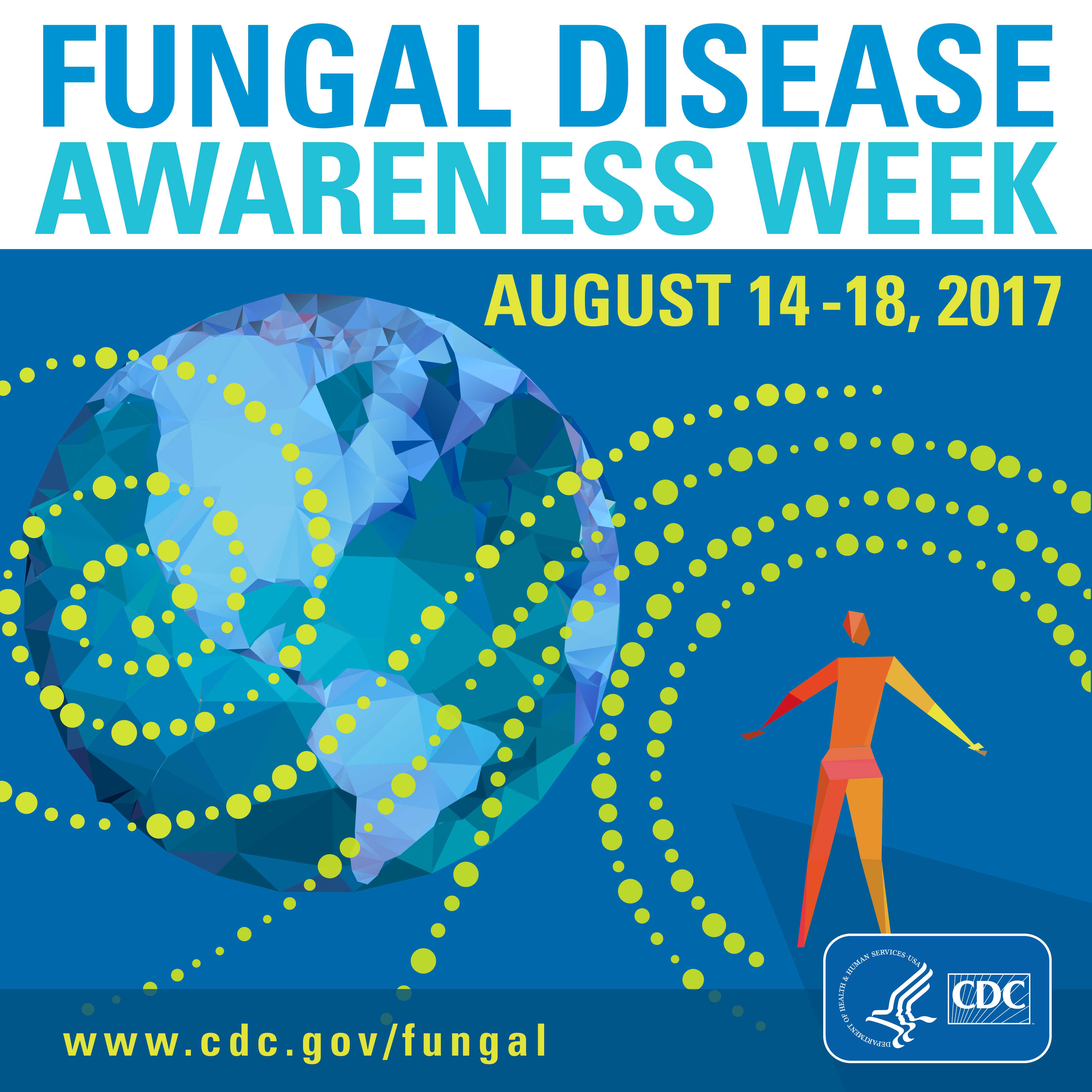First Fungal Disease Awareness Week Encourages Patients, Doctors To “Think Fungus”
New observance focuses on dangers of undiagnosed fungal infections
Media Advisory
For Immediate Release: Wednesday, August 9, 2017
Contact: Media Relations
(404) 639-3286

Fungal Disease Awareness Week, August 14-18, 2017
What
CDC organized the first Fungal Disease Awareness Week to highlight the importance of recognizing serious fungal diseases early enough to provide life-saving treatment. Fungal diseases are often caused by breathing in very small fungi from the environment or by touching fungi on surfaces. Considering fungal diseases when diagnosing an infection is one of the most important ways to reduce delays in diagnosis and treatment of potentially life-threatening infections, which can save lives.
The week is an opportunity for partners to get people with infections to “Think Fungus” if their symptoms are not getting better with treatment and to talk to their doctor about the possibility of a fungal infection. Doctors are encouraged to “Think Fungus” if patients have symptoms that are not improving with treatment, particularly patients with weakened immune systems.
When
August 14–18, 2017. Join us in spreading the word by signing up for the #FungalWeek Thunderclap on Monday, August 14, at 10 a.m. ET: http://thndr.me/r38Aq4
Why
Fungal diseases can cause serious illnesses and death, yet often go undiagnosed because their symptoms look like those of other diseases. For instance, Valley fever is an inhaled fungal disease that is often misdiagnosed as bacterial pneumonia, resulting in the wrong treatment and putting patients at risk of antibiotic-resistant infections.
Concerning facts about fungal disease:
- About 46,000 cases of healthcare-associated invasive Candida infection occur each year in the United States.
- Candidemia – a type of invasive Candida infection – is one of the most common causes of healthcare-associated bloodstream infections in the United States. Nearly 1 in 3 people with this infection die.
- Some types of Candida and Aspergillus infections are becoming harder to treat with the most commonly used antifungal medicines due to increasing antimicrobial resistance.
- About 150,000 Valley fever infections occur in the United States each year, yet only about 10,000 cases are diagnosed and
- The fungus that causes Valley fever mainly lives in Arizona, California, Nevada, New Mexico, Texas, and Utah. California reported 5,372 cases in 2016, the highest annual number ever reported in that state.
- Globally, fungal diseases like Cryptococcus infection are a big problem for people with weakened immune systems, particularly those with HIV/AIDS. Often, the people live in lower-income areas where diagnosis and treatment can be challenging.
- Worldwide, an estimated 220,000 new cases of cryptococcal meningitis occur each year, resulting in about 180,000 deaths.
People most commonly affected by serious fungal diseases include those with cancer, HIV/AIDS, organ or stem cell transplants, people in hospitals, and people taking medicines that weaken the immune system. People with weakened immune systems are more likely to get serious fungal infections in the lungs, blood, and brain.
Where:
Information and resources about Fungal Disease Awareness Week can be found at https://www.cdc.gov/fungal/awareness-week.html.
- Page last reviewed: August 9, 2017
- Page last updated: August 9, 2017
- Content source:



 ShareCompartir
ShareCompartir